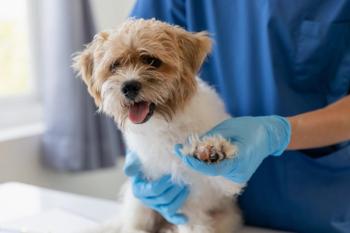
Study shows early neutering poses health risks for German shepherds
UC Davis research finds early neutering triples risk of certain joint disorders, urinary incontinence in females.
Getty Images
A
"Debilitating joint disorders of hip dysplasia, CCL and elbow dysplasia can shorten a dog's useful working life and impact its role as a family member," says lead investigator Benjamin Hart, DVM, PhD, DACVB, a distinguished professor emeritus in the UC Davis School of Veterinary Medicine, in the release. "Simply delaying the spay/neuter until the dog is a year old can markedly reduce the chance of a joint disorder."
In the UC Davis study, researchers looked at veterinary hospital records for a 14.5-year period for 1,170 intact and neutered (including spayed) German shepherds for joint disorders and cancers previously associated with neutering. The diseases were followed through 8 years of age, with the exception of mammary cancer in females, which was followed through 11 years of age. Dogs were classified as intact, neutered before 6 months, neutered between 6 and 11 months, or neutered between 12 and 23 months. Joint disorders and cancers were of particular interest to the researchers because neutering removes male and female sex hormones that play key roles in processes such as closure of bone growth plates, the release states.
The findings show that 7% of intact males were diagnosed with one or more joint disorders, as contrasted with 21% of males that were neutered prior to 1 year of age. Five percent of intact females were diagnosed with one or more joint disorders, while in females neutered before the age of 1 the percentage diagnosed rose to 16%. Mammary cancer was diagnosed in 4% of intact females, as compared to less than 1% of females neutered before 1 year. In intact females, urinary incontinence was not diagnosed at all; however, in females neutered before 1 year of age, it was diagnosed in 7% of cases.
Newsletter
From exam room tips to practice management insights, get trusted veterinary news delivered straight to your inbox—subscribe to dvm360.




